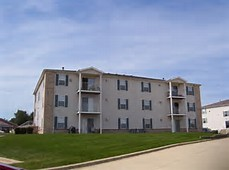Multi-Family Insurance Coverage for your Investment Property
As you know, multi-family dwellings are different than many traditional properties. Multifamily dwellings often include shared kitchens, multiple bathrooms, and bedrooms that have walls in-between them. You have more people living under the same roof under the same entity, rather than detached units. Thus, you must insure it differently than a traditional property to protect your investment and your tenants.
As with anything you invest in, multi-family properties come with increased risk of damages. To mitigate liabilities caused from residents and other naturally occurring causes, you need to purchase a multi-family insurance policy.
When looking to insure your multi-family complex, you are going to purchase a policy that has many parallels to a standard homeowners and landlord policy, except with differences that reflect multiple families living together under the same roof. With more families living together, there is an increased risk of damages and liability as there are more opportunities for things to go wrong such as injuries and property damage. A multi-family insurance policy will help cover this increased risk.
Where to Start Looking for Multi-Family Insurance Coverage
For one, it is recommended that you first contact an independent insurance agent to find a policy. This is because it can be a bit trickier to find out how and what to insure. Since there are a wide variety of multi-family properties such as duplexes, quad-plexes, apartments, condominiums, or townhouses, the amount of coverages and cost vary wildly. There many variables that play into your insurance needs such as location, age of building, and architecture that can only be determined on a case by case basis. More explained below.
An independent agent is your best bet to get the best coverage at the best price because these agents don’t get commission from your business and are looking out for your best interest in getting you the right policy coverage.
Non-owner, Occupied Multi Family Dwellings
When contacting an agent, it is best to be prepared with a little knowledge beforehand. Since you likely don’t live on the property, and it is an investment, you will need a dwelling and fire policy. We even recommend a business owners policy (to cover loss of income if your tenants don’t pay rent, or loss of income when repairs are being made).
A dwelling fire policy is more tailored and narrower covering specific hazards for your situation. A dwelling fire insurance policy is not just limited to fire and smoke, but also includes protection against weather related damage, vandalism, explosions, and other damages like a regular home insurance policy.
A dwelling fire policy, also known as DP-3 covers the following:
- Dwelling – What your policy will pay if your investment was ever destroyed. It reflects the actual building itself.
- Other Structures – This can include fences, sheds, and anything surrounding the home. These too pose a risk of damage and injuries and will need to be part of your policy.
- Loss of Use or Rental Value – If something gets ruined and you need to have your tenants leave the premises until it is fixed, you will lose income. This helps cover that loss of rent.
- Personal Liability – With more people living there, the chances of injuries goes up. If someone falls and hurts themselves, personal liability will cover you. It also covers against lawyer fees and defense attorneys to fight any cases that may occur.
- Extra Umbrella Policies and Coverages like Ordinance & Law Coverage – You need to discuss with your agent about your special circumstances for this aspect.
Factors That Affect Rates
This type of insurance generally cost more than a traditional homeowners and landlord policy. The factors that affect rates are following:
- Property Age – Older homes are typically costlier to insure. An older building has more risk of damage because the materials have depreciated over time. Also, construction practices were less strict even just 25 years ago than today.
- Wiring Age and Integrity – Wires cause fires all the time. Improper wiring can start a fire and destroy the whole property.
- Architecture Types – Special features such as a patio or porch offer increased risk of injuries which can increase your rates.
- Security Measures – Locked gates, cameras, properly lighted property, proper locks and windows can all reduce your rates because it is safer. You can get discounts for adding safety features to your property.
- Dwelling Location – Where you live affects insurance rates. Also, certain neighborhoods pay more for insurance because the risk is pooled together. For example, people in Florida will pay more because of the risk of hurricanes. People in Oklahoma typically pay more because it is in tornado alley. Also, some neighborhoods have increased rates of vandalism and theft crime, which increases rates.
- Owner vs. Non-Owner Occupied – Again, since you don’t live in the property, it is different than a traditional homeowners policy.
To cover your investment, get a proper multi-family insurance policy. Talk to an independent agent and discuss all the factors listed above. You want to have as much detail as possible when chatting to get the best rates and coverages.
Happy Investing!
Multifamily Inspection Services
321-369-9921


